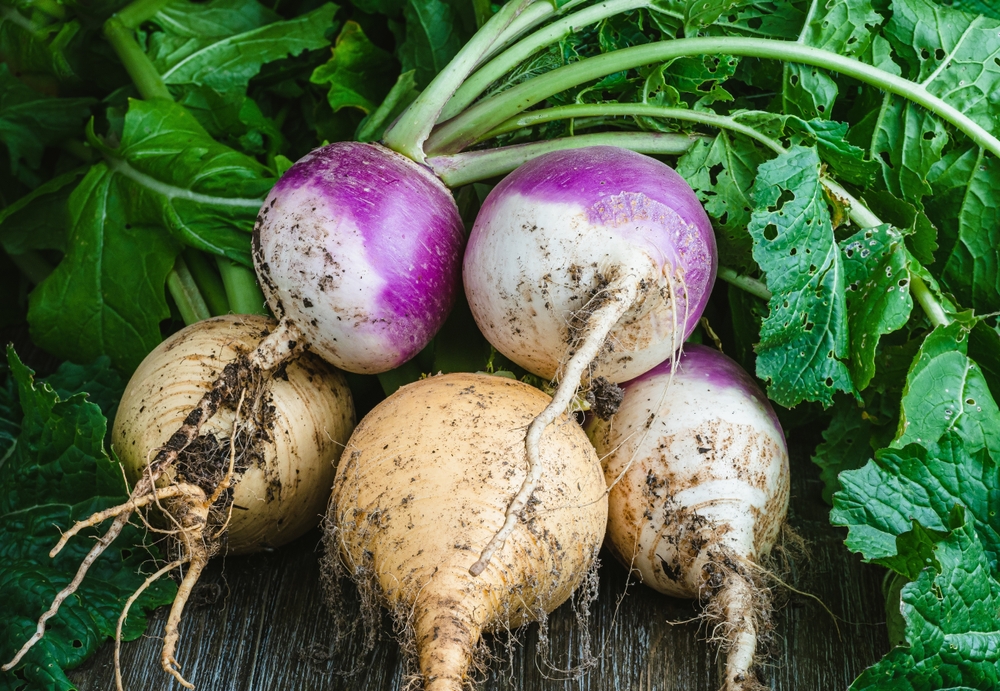
Image Source: Shutterstock.com
Imagine stepping into a cool underground cellar in the dead of winter and pulling out fresh, crisp vegetables like they were just harvested yesterday. No grocery store runs, no bags of wilted greens, no sighing at out-of-season price spikes. For homesteaders, gardeners, and anyone who loves self-sufficiency, a well-stocked cellar is more than storage—it’s security, convenience, and deeply satisfying magic.
Root vegetables are the stars of cold storage because they settle comfortably into low-light, moist environments and wait patiently until you’re ready for them. If you want to keep your pantry full long after the frost hits, these eight root crops are worth growing—and storing—like your ancestors did.
1. Potatoes
Potatoes earn the top spot on almost every cellar storage list because they’re hardy, versatile, and incredibly long-lasting when stored correctly. A cool, dark place with a little humidity keeps them plump and delicious for months. You’ll want to avoid washing them before storage and instead brush off loose soil to prevent early rot. Store them away from onions, which can encourage sprouting and spoilage due to gas release. With the right variety—like Russets or Yukon Gold—you’ll have reliable meals all winter long.
2. Carrots
Carrots are one of the easiest vegetables to store for extended periods, and they don’t lose their sweetness or snap along the way. They love slightly moist environments, so packing them in sand or sawdust is a classic method that still works perfectly today. The cold slows down sugar-to-starch conversion, keeping flavor and texture intact. Make sure to trim greens before storage to prevent moisture loss. When handled correctly, carrots can last deep into spring without turning soft or bitter.
3. Beets
Beets aren’t just nutrient powerhouses—they’re also cellar champions. Their dense, hearty structure holds moisture remarkably well, giving them impressive longevity. A bit of dirt clinging to them is actually beneficial, so don’t over-clean them before storage. Trim greens to avoid moisture drain but leave the stems just long enough to prevent bleeding. With their rich color and earthy sweetness, beets keep your winter meals vibrant and lively.
4. Turnips
Turnips may not get as much culinary hype as potatoes or carrots, but they deserve a spot on every winter storage list. Many heirloom varieties store especially well, maintaining firm texture rather than turning spongy. Their spicy, earthy flavor mellows over time, making them even more delicious after a few months in the cellar. Trim the greens and store them in breathable containers to avoid mold or excess condensation. When you pull turnips out midwinter, you’ll feel like you’ve discovered treasure.

Image Source: Shutterstock.com
5. Rutabagas
Rutabagas are the sturdy, slightly sweeter cousin of the turnip, and they thrive in long storage conditions. Their thick skin and dense interior help them resist rot and moisture loss better than many other root vegetables. A slightly damp environment is ideal, so storing them in crates or bins works beautifully. Like other roots, trimming greens is essential for longevity. Their robust flavor is perfect for hearty soups and roasted winter dishes that warm you from the inside out.
6. Parsnips
Parsnips may not be the flashiest vegetable in your garden, but you’ll appreciate their quiet reliability when the snow starts falling. These pale roots actually become sweeter after frost exposure, which makes them ideal late-season crops. Their flavor deepens in storage, turning them into a gourmet addition to winter meals. Keep them stored in slightly moist packing material to maintain firmness. When roasted or added to stews, parsnips bring a cozy, old-world charm that tastes like home.
7. Celeraic (Celery Root)
Celeraic looks unusual, but its long storage life and incredible flavor make it a cellar MVP. Its knobby exterior protects a crisp, aromatic interior that brings brightness to winter meals. Because it has lower moisture loss compared to leafy vegetables, it stores exceptionally well under cool, humid conditions. Trim the tops and clean lightly, but leave enough skin to safeguard freshness. When grated into slaws or added to soups, it brings a surprising pop of flavor that breaks up heavy winter dishes.
8. Onions
Onions store well in cellars as long as they are kept cool, dry, and well-ventilated. Their papery skins act like natural armor, guarding them from mold and moisture. Hanging them in braids or storing them in mesh bags helps air circulation and prevents quick spoilage. Keep them away from potatoes to avoid sprouting and flavor cross-influence. With their long shelf life and endless uses, onions might be the most dependable winter ingredient around.
Your Winter Kitchen Starts In The Cellar
Root crops aren’t just practical—they’re a direct link to a time when households survived winter with creativity, preparation, and a bit of earthy magic. Storing these vegetables properly means fewer grocery trips, more nutritious meals, and a deeper connection to your food. With the right conditions, your cellar becomes a treasure chest of flavor and comfort. These eight root crops hold up beautifully for months and reward you with taste and convenience that only real storage-grown produce can deliver.
Have you tried storing any of these or discovered others that keep surprisingly well? Share your experiences, questions, or tips in the comments below.
You May Also Like…
Why Shorter Days Mean Bigger Root Crops
How Frost Heaves Damage Roots in Winter
9 Fall Harvest Crops That Can Be Stored Without Refrigeration
8 Seedlings That Transplant Better in Cool Weather
12 Soil Problems Fixed Best in Autumn
Leave a Reply